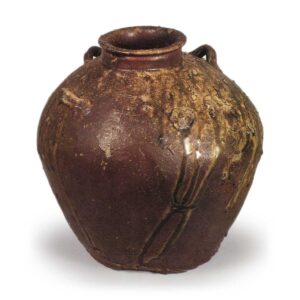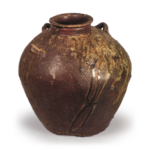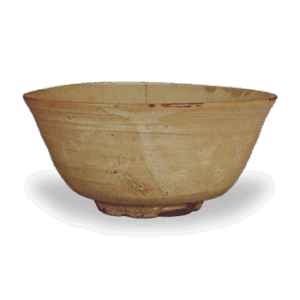
16th century
Height 24.6 cm, mouth diameter 8.9 cm, body diameter 24.1 cm, bottom diameter 14.9 cm
The short, upright neck is slightly folded upward at the apex, and the top has a flat rim measuring approximately 1 cm. The center of the body protrudes widely, giving it a shape similar to that of an arithmetic bowl, but the large base gives the vessel a massive appearance despite its small size. It has four lateral ears on the shoulder, but one ear is missing. The clay used for the base has a high iron content and is well tempered, giving the entire surface a brownish-brown luster. The dark green natural glaze on the shoulder of the jar partly runs down to the lower half of the body, enhancing the aesthetic effect of the jar. There is a dry kiln mark on the shoulder.
The shape of the edge of the rim suggests a date in the first half of the 16th century. This rare four-eared jar may have been made for a special purpose.








